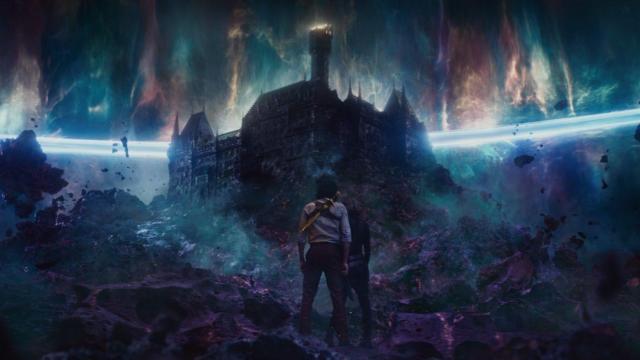There are a lot of Earths in the vast, varied, and occasionally blown-up Marvel multiverse—realities that have now grown to encompass the alternate universes not just in comics, but games, cartoons, live action TV, and yes, movies. But now Marvel is set to draw the ire of very specific nerds, and also presumably The Marvels star Iman Vellani by declaring its films now borrow the same reality name as its comics.
The main continuity of Marvel Comics exists in the universe designated Earth-616—terminology that has existed for the best part of half a century now, having been introduced in the 1980s by writer David Thorpe as part of Marvel UK’s Captain Britain comics. But now, in the new accompanying handbook The Marvel Cinematic Universe: An Official Timeline, released last week, the “sacred timeline” depicted in Marvel’s cinematic universe has officially declared itself as Earth-616.
There’s previously been easter egg attempts across the MCU to claim its continuity as the Earth-616 timeline—Spider-Man: Far From Home, for example, had Mysterio refer to the MCU’s earth as Earth-616. Although it’s not like he turned out to be the most reliable of narrators on multiversal designations, the idea came up again in Doctor Strange in the Multiverse of Madness, where an alternate-reality Christine Palmer told the MCU Stephen Strange that he hailed from Earth-616.
But for the most part, the MCU timeline has also been designated as taking place on Earth-199999. That designation was first introduced in 2008’s Official Handbook of the Marvel Universe A-Z to differentiate the MCU from mainline comics continuity, and has been used in fits and starts ever since. Not just in comics, either: Earth-199999 made its way over to movies earlier this year in Across the Spider-Verse, when Miguel O’Hara referred to the Peter Parker of the MCU as “the little nerd back on Earth-199999,” in reference to the events of Spider-Man: No Way Home.
Diehard fans of incredibly specific continuity designations across the internet—and even diehard fan/actual Marvel Cinematic Universe star Iman Vellani—have repeatedly pushed back on Marvel Studios’ attempts to claim Earth-616 for itself. ““I have this argument with Kevin [Feige] every time I meet him in person. It’s not all 616, the MCU is definitely 199999,” Vellani railed to Deadline in an interview last year to mark the launch of Ms. Marvel.
“You can’t take it from the Marvel comics canon, that was the main comics canon where all the main events took place. In that canon, Kamala is an inhuman, there’s Lockjaw, House of M took place with X-Men—where’s all that with MCU if it’s 616? I rest my case,” the actress continued. I really hope no one comped her a copy of An Official Timeline, for her own sake.
While for the most part none of this really matters, it’s interesting to see the push and pull of what Marvel Studios wants its version of these stories to be seen as: Earth-616 isn’t just a number or an easter egg at this point, it is a seal of official, primary status. To be declared 616 is to be Marvel, comics or cinematic universes be damned. And perhaps to many fans across the world at this point, the movies might as well be that primary reality: there are infinitely more people out there watching MCU shows and movies than there are regularly reading the comic books that provide their source material. Even as that source material has waxed and waned on how it integrates elements from the MCU into its own ever-flexible canon, it would seem the MCU staking its claim on the Marvel that “matters” continues to be as inevitable as Thanos itself.
Want more entertainment news? Check out when to expect the latest Marvel, Star Wars, and DC releases, what’s coming to cinemas in Australia this year, and everything streaming this month across all platforms. Check out our dedicated Entertainment tab for more.
